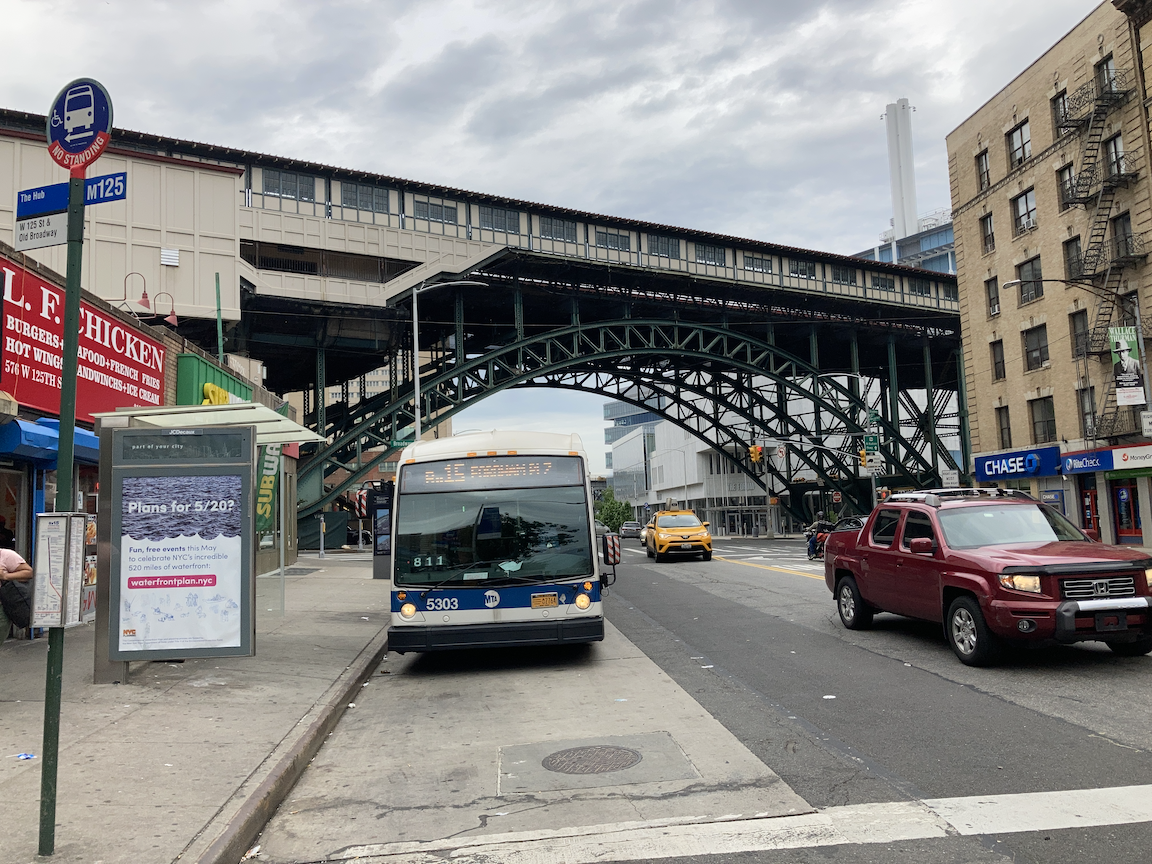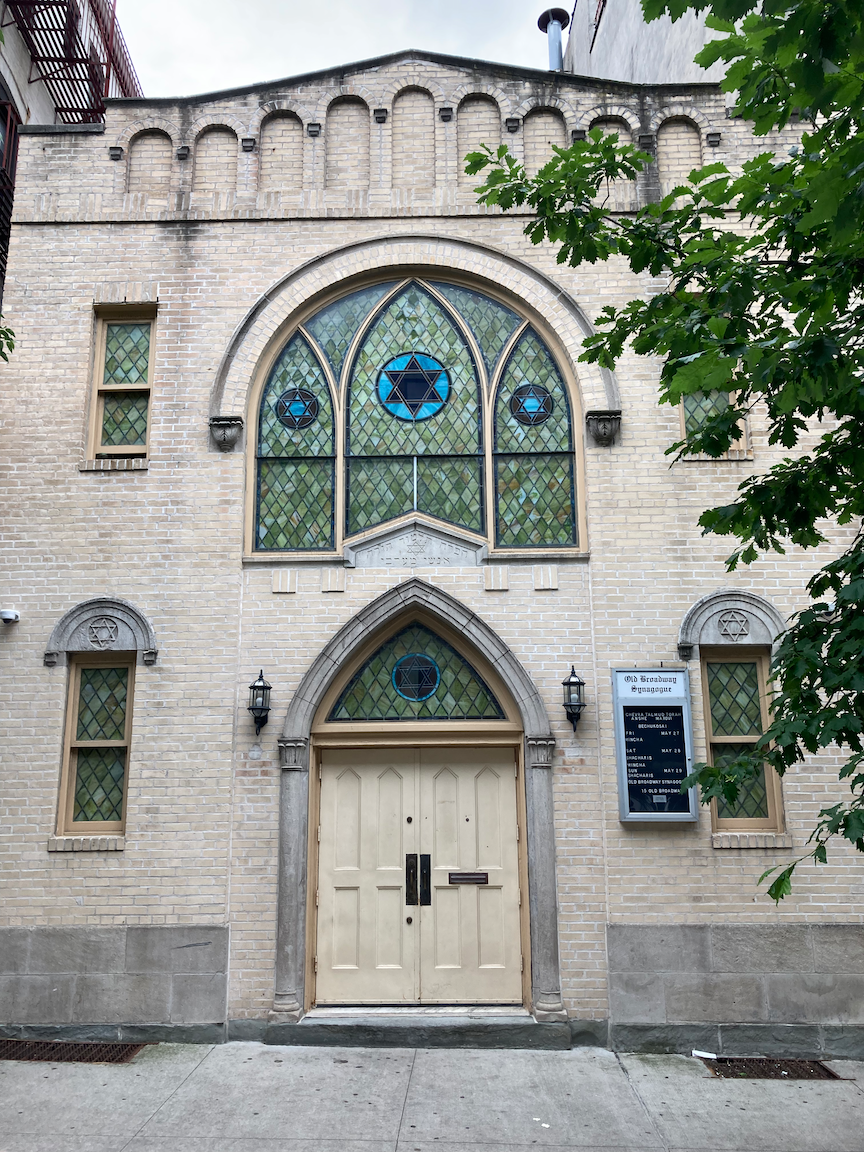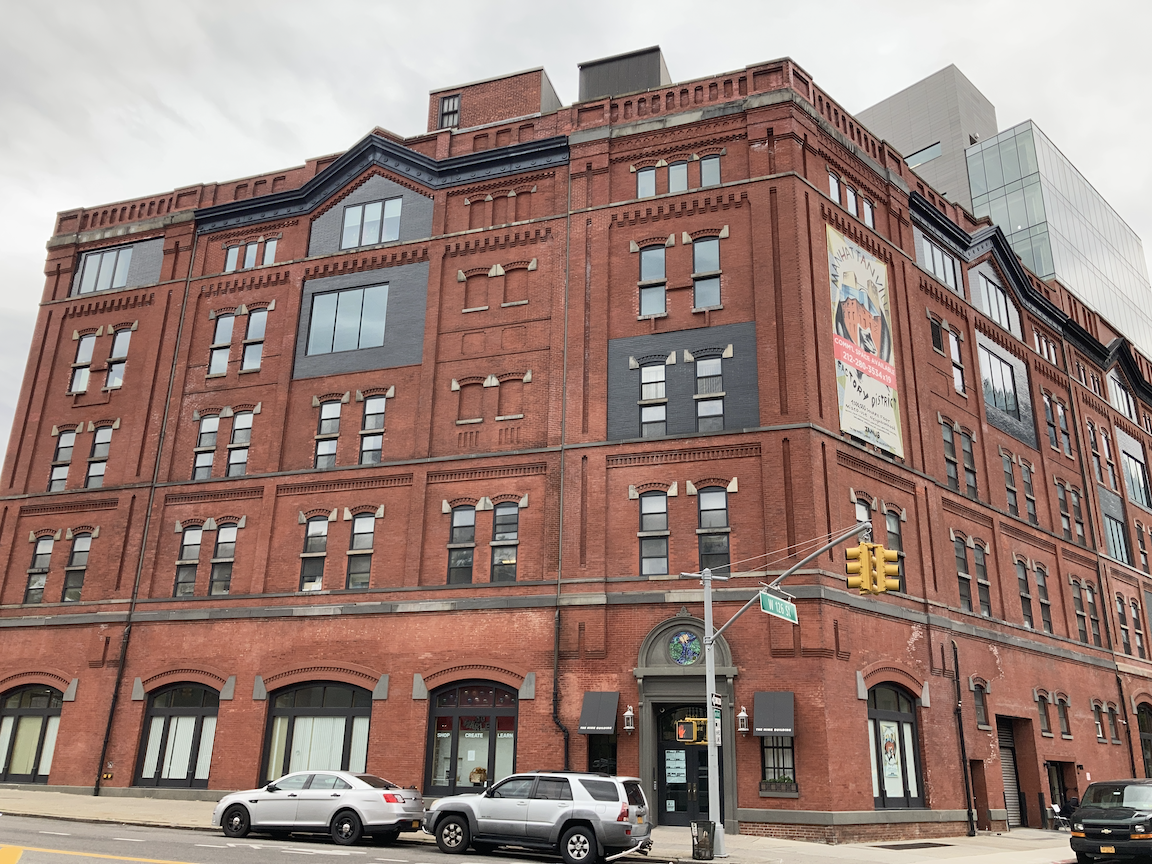Four Stair Streets and a Tunnel Street (Manhattan)
WHERE: Stair Streets at Fairview Avenue, Broadway Terrace, West 128 Street, West 120 Street, and tunnel street at West 190 Street, Manhattan
START, NORTHERN PART: 181 Street subway station (A train)
FINISH, NORTHERN PART: 190 Street subway station (A train)
START, SOUTHERN PART: 125 Street subway station (1 train)
FINISH, SOUTHERN PART: Cathedral Parkway - 110 Street subway station (1 train)
DISTANCE: 2.6 miles (4.2 kilometers)
Photographs by Michael Cairl except as noted. Maps courtesy Google Maps.
For this trip I decided to walk all four stair streets in Manhattan that I had not yet visited. This required doing the trip in two parts, separated by a subway ride. The northern part was in Washington Heights, and the southern part was in Manhattanville and Morningside Heights.
Map of the northern part of this walk, itself in two parts. Route reads from left to right in the first part, right to left in the second part.
Overlook Terrace entrance, 181 Street subway station.
The northern access to the 181 Street subway station of the A train has a lower entrance on Overlook Terrace, where I started this trip, and an upper entrance on Fort Washington Avenue that is reached by elevators. The lower entrance is carved into the sheer rock that comprises this narrow, steep ridge line. From the subway entrance it is two short blocks to Broadway (U.S. Route 9), which in this part of Manhattan lies in a valley between two ridge lines, one topped by Fort Washington Avenue and the other by St. Nicholas Avenue.
Walking downhill on Broadway, I passed Amelia Gorman Park and its serpentine path up the steep hill to Wadsworth Terrace. The park entrance was fenced off and a sign read “DO NOT ENTER. Dangerous condition. Reconstruction expected in late 2020.” From the looks of things, it will be a while before I can climb that path. There was no sign of construction anywhere.
I continued on Broadway to the entrance to the tunnel street at West 190 Street. There are no motor vehicles here; it is a pedestrian tunnel 12 feet (3.7 meters) wide. It extends 3 blocks to the 191 Street subway station (1 train), the deepest in the New York subway system, and the elevators up to busy St. Nicholas Avenue. The combination of the tunnel street and elevators allows people to go easily between Broadway and St. Nicholas Avenue. I took this route to start Part 2 of the northern part of this trip. The three images below are of the tunnel street.
From the subway entrance on St. Nicholas Avenue I made my way to narrow Wadsworth Terrace and a slow, careful walk downhill and north, to the first of two stair streets in the area, 21 steps down from Wadsworth Terrace to Fairview Avenue. The stairs and handrails are in good condition. These two streets, plus Broadway Terrace and West 193 Street, comprise a switchback route from the top of this ridge line down to Broadway. There are 18 steps down from Fairview Avenue to Broadway Terrace. From Urban Artchive: “This small step street helps pedestrians navigate the fork at the road created by Broadway Terrace splitting off from Fairview Avenue. The iron banisters provide a sturdy grip for people get around the steep corner.” The steps are in decent condition but the handrails need to be repaired and made plumb. In the images below, the first two are of the Fairview Avenue stairs, and the last two are of the Broadway Terrace stairs. Last image courtesy urbanarchive.org.
The bottom of the switchback is at West 193 Street and Broadway. From there I made the short walk to the lower entrance of the 190 Street subway station, one block west of Broadway on Bennett Avenue, finishing the northern part of this trip.
Map of the southern part of this walk, reading from top to bottom.
The southern part of this trip began at the elevated subway station at West 125 Street and Broadway. West 125 Street is in a valley between Morningside Heights to the south and Harlem Heights to the north. This is part of the first subway that opened in 1904. The stations to the north (Columbia University - 116 Street) and to the north (137 Street - City College) are underground. The tracks on this structure are level; it is the ground that dips and rises.
This part of West 125 Street runs diagonally to the street grid and was originally called Manhattan Street. The centerpiece of the station is an impressive steel arch that carries the structure and station across West 125 Street. When it was built, access to the station mezzanine was by escalators from a station house in the middle of Broadway. This was replaced in 1931 by the current stairs and escalators at the curb. The three images below show the station in 1930 with the station house, the station in 1931 with the station house removed, and the station today. The first two images are from the digital collection of the New-York Historical Society.
This area is known historically as Manhattanville. Columbia University is building a new Manhattanville campus between Broadway and Riverside Drive, having run out of room to build at the Morningside campus just to the south, and the Graduate School of Business has already relocated there. From West 125 Street I turned onto Old Broadway, and am glad I did. Old Broadway is a fragment of the old Bloomingdale Road, most of which became Broadway. One block long, this street boasts an impressive mural dedicated in part to Malcolm X, and the little Old Broadway Synagogue, the cornerstone of which is dated 1923. Turning onto West 126 Street, I saw St. Mary’s Church of Manhattanville (Episcopal, founded 1823, current building dating from 1908). An excellent look at this church (bravo again, Kevin Walsh) is at https://forgotten-ny.com/2018/06/st-marys-church-manhattanville/. At the corner of West 126 Street and Amsterdam Avenue is the former Yuengling Brewery. For an interesting and detailed history of this building go to https://6tocelebrate.org/site/yuengling-brewing-complex/. These scenes appear in the images below.
A short distance on was the first stair street in this part of the trip, at West 128 Street and Convent Avenue. (According to The Street Book by Henry Moscow (Hagstrom Company, 1978), “Convent” refers to the Convent of the Sacred Heart, which stood in this area until it burned to the ground in 1888, not to St. Joseph’s Convent at the corner of West 127 Street, operated by the Missionaries of Charity order founded by Mother Teresa.) West 128 Street is a cul-de-sac that ends just short of Convent Avenue, hence the stair street. The stairs themselves are in acceptable condition but new handrails on both sides are urgently needed. 18 steps down and 18 steps up.
From there I walked south to West 120 Street and Morningside Avenue for what proved to be the most challenging part of this trip: climbing the West 120 Street stairs in Morningside Park. It was apparent that the stairs had no handrails, but I hadn’t walked there to not climb them, so I started climbing. The lower 61 steps are in decent condition, and the risers are high enough that I had to climb with great care, one step at a time, using my cane for balance and giving the steps my undivided attention. Parks Department, please install proper handrails here! In contrast, the upper 77 steps are among the best I have climbed. These are in excellent condition, the risers are of uniform height, and there is a continuous handrail at a good height, at least for me.
At the top of the stairs is Morningside Drive, the eastern boundary of Columbia’s Morningside campus. From there I made my way to V&T’s, a favorite Italian restaurant when I was a graduate student at Columbia from 1976 to 1978. The interior has changed very little and the food is delicious.
This was a satisfying trip, a good workout from the hills and stairs and with plenty of urban history. Stair recap (excluding subway stations): 156 steps up, 57 steps down, total 213. As of this trip I have climbed 111 stair streets in New York City, with 1 remaining in Manhattan, 2 in the Bronx, and 6 on Staten Island.

























